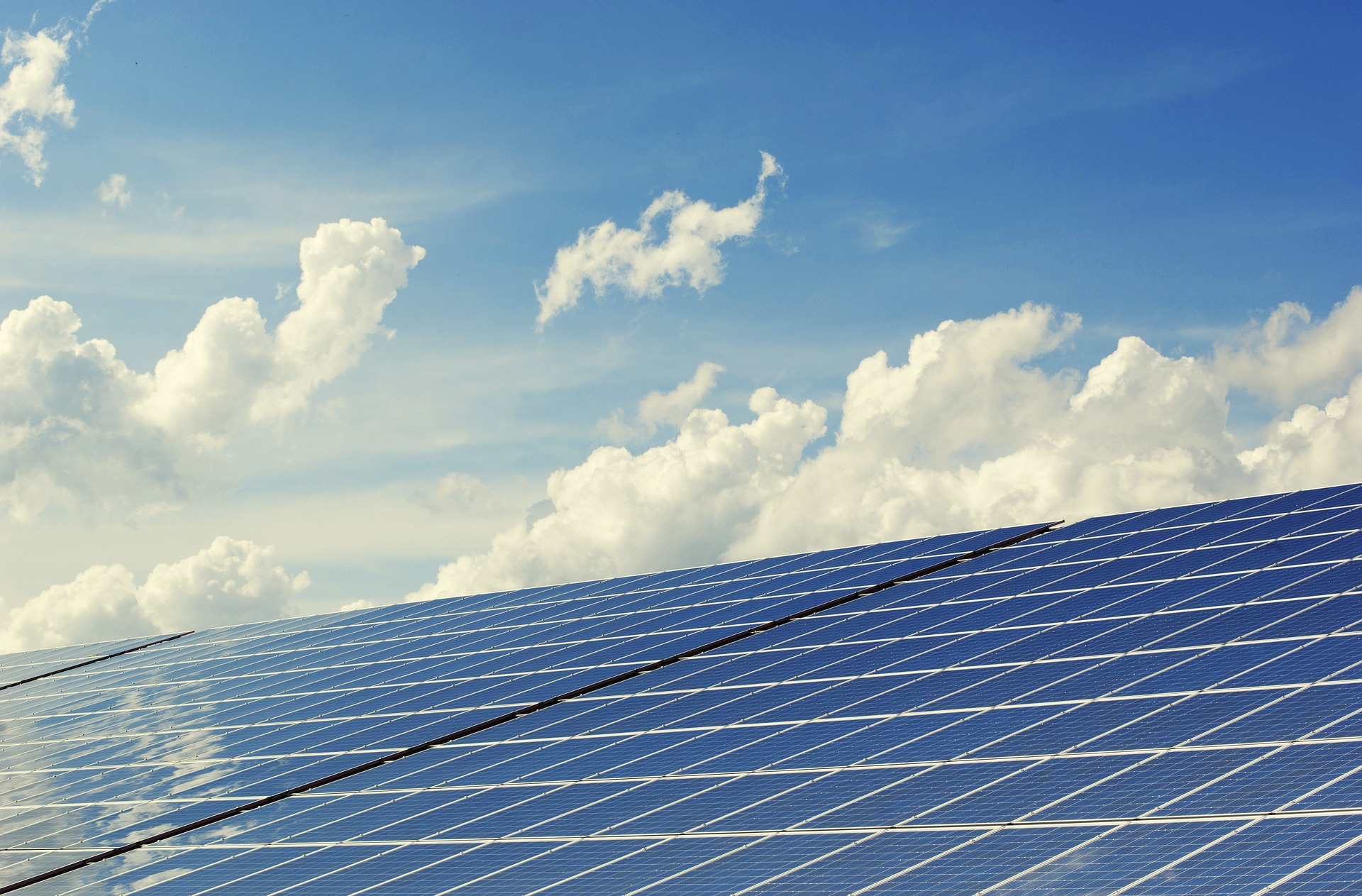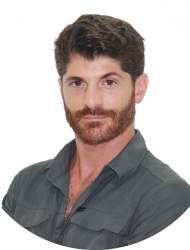
Israel's “Shikun” public housing projects have suffered from years of neglect. Encouraging residents to lease their rooftops to solar energy companies might provide a lifeline—and engender a new community spirit at the same time.
Almost anywhere you go in Israel, but especially in the peripheral towns in the north or south, and on the outskirts of large cities, you will see them—the Shikun buildings. They are a product of the social welfare state, characterized by an identical architectural typology: the planning model chosen to be the foundation of entire neighborhoods, a way to provide housing, on a large scale, for thousands of Jewish immigrants. Starting in the 1950s, extensive construction was undertaken to create public housing projects for evacuees of the ma'abarot transit camps. During this period, public housing constituted about one-half of the housing supply in the country.
These buildings can be recognized by their communal design: a large flat roof, generous ground floor, and a symmetrical staircase, all allowing social interaction between neighbors. They were built, as public housing, by two state-owned companies, Amidar and Amigor. In the 1980s and 1990s, many of these apartment projects were privatized by the government, and the apartments were sold at subsidized prices to their tenants, mostly immigrants from Romania and the Former Soviet Union. Today, the average “Shikun” building has a variety of apartment owners: locals, investors, and the remaining tenants of state-owned public housing initiatives.
Due to the gradual yet consistent privatization of the apartments, transferring ownership from the state to private individuals, the general condition of the Shikun buildings has deteriorated over the last decades. In the central regions of Israel, where demand for new apartments is high, "TAMA 38" has become the prime mechanism for overhauling and renovating them. This is being done mostly by real estate developers, who lead the construction program by
strengthening and upgrading the older apartment buildings, to protect them from earthquakes and to increase urban housing units in high-demand areas. The developers, in return, get to add two additional floors to the buildings.
This results in an unsustainable situation, with many veteran residents forced to cash out, due to higher maintenance fees or the need for money—they cash out and move to cheaper locations. Similarly to gentrification, urban communities that were formed based on their geo-cultural heritage are experiencing fractures in their homes and communal identity, through the lack of permanence in new locations, often out of context.
In many of the towns in the south of Israel, the value of the land is too low to attract investment for overhaul such as through "TAMA 38," since there’s neither the need nor the desire for concentrated development. In addition, because many of the buildings lack Residents' Committees or other means of self-governance, debts from unpaid communal electricity bills have been left to pile up for decades.
However, these buildings have one thing in common—a large flat roof, perfect for the installation of solar panels. This provides an opportunity to "organize," and to create a source of revenue generation for the building, by the building. Residents working together can lease the roof of their building to an energy company, and receive as much as NIS 10,000 a year, which they can split between themselves or use to cover shared maintenance and electricity costs, and even community events.
This presents a new form of alternative urban renovation. Apartment owners can also pool together to purchase outright solar panel systems, by splitting the costs between themselves and spreading out repayments over a number of years. This has created a new way for lower-income communities to invest money, with an attractive Return on Investment (ROI) of 6 years, and a yield of almost 13%. Urban solar panel installation can also reduce electricity costs for individual households, costs which have been going up over the last few years. Furthermore, banks are now open to fully funding the installation of solar panel systems.
If this is the case, then why are there close-to-zero solar panel systems installations on the approximately 30,000 Shikun buildings in Israel? Why haven't renewable energy sources been looked at as a tool for social empowerment for lower-income households? Why doesn't the government set regulations supporting the spread of solar energy to more demographics?
Even though the number of solar energy companies has multiplied in just a few years, and regulations are in full favor of solar energy (Israel must reach its Paris Agreement targets—17% of all energy from renewable sources by 2030, currently 2.5%), the solar energy sector skips shared apartment buildings. It is much more convenient for solar energy entrepreneurs to install panels on a private house, an industrial space, a farm, or a range.
This creates a problematic scenario, whereby the populations who do enjoy the benefits of solar and clean energy are mostly the wealthier segments of Israeli society. Every year, the country determines a limit on the amount of electricity produced by solar energy—and this limit ends up serving the same demographics. In addition, the current law states that in order to use the roof of a shared apartment building for solar panel systems, there must be a 100% resident agreement, which is close to impossible.
Over the last three months, I took on this mission—to promote the use of solar energy in the cities of the peripheral south of Israel, and to spread awareness of a model of what I saw as an alternative source of community empowerment and urban renovation. Together with my co-founder Yishai Lehavi, we started Tulou, an initiative dedicated to promoting energy efficiency in the apartment building. We partnered with the municipality of Mitzpe Ramon, chose 11 Shikun buildings, and started to help them form Residents' Committees, together with 14 local students and residents from the town. I’ve spent the last three months knocking on the doors of over 100 apartments, talking to residents of Shikun buildings, about both organizing to lease building roofs to a solar energy company, or alternatively purchasing the system themselves. The second option did not catch, due to the residents' fear of investing money in a new field, lack of trust between neighbors, suspiciousness on the part of the municipality, and widespread fear of radiation.
“However, these buildings have one thing in common—a large flat roof, perfect for the installation of solar panels."
It was surprising to realize the real barriers to promoting solar energy. About 50% of the residents we interviewed did not want to have solar panels on their roofs, because they believed that it was a health hazard and a source of dangerous radiation. Counter to this, It was also surprising to see how many people had the desire to fix their living environments, and were willing to consider solar panel installation as a solution for creating a much-needed revenue stream for their buildings, managed by the newly-formed residents' committee.
Now, we have reached the end of the project in Mitzpe Ramon; we are close to getting three Shikun buildings to install solar energy panels, by leasing their roofs to a solar energy company, and then using the revenue for shared maintenance services, such that the residents have no costs besides leasing the roof to a solar energy company.
Solar energy can be both an economical investment for lower-income populations and a tool for saving money and generating revenue. When a family or a community invests in solar panels or rents its roof to a solar company, the residents have more means to deal with increased prices. In addition, buying a solar system for an average roof is a far cheaper investment than buying an apartment- with a great yield and return on investment.
In the future, we hope to lobby our legislators to increase the existing limit for the production of solar energy, but just from shared buildings in the south of the country, so that lower-income populations will be able to contribute to the mandatory criteria for the use of renewable energy.
Yael Shemer


